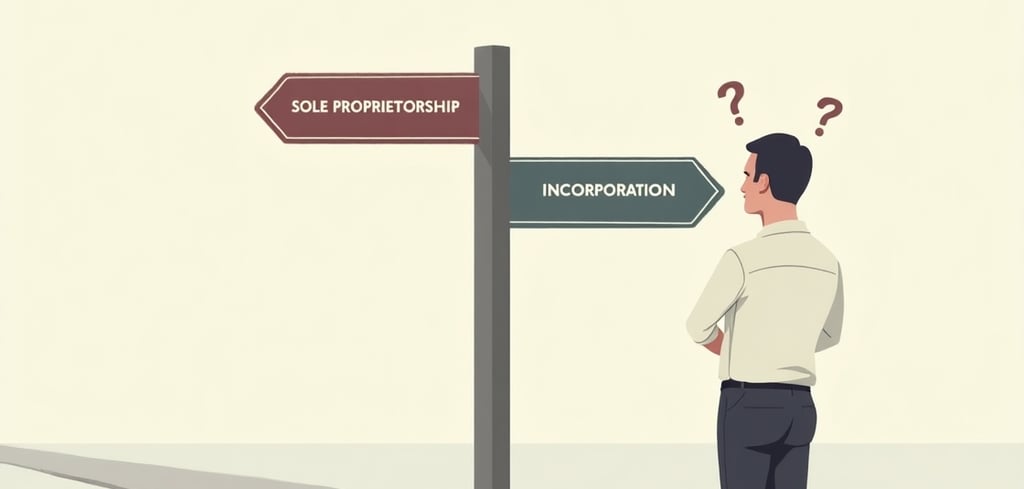Business Structures in Canada: Sole Proprietorship, Partnership, or Incorporation?
Understand the key differences between sole proprietorship, partnership, and incorporation in Canada. A practical guide for international entrepreneurs choosing the right path to start strong and grow with confidence.
NexStep Strategies Team
7/12/20251 min read
When launching your business in Canada, one of the most important decisions is choosing the right business structure. For newcomers, the most common paths are Sole Proprietorship, Partnership, and Incorporation. Let’s compare them:
Sole Proprietorship
Simple and inexpensive to register
Personal liability: you are legally responsible for debts
Profits taxed as personal income
Good for testing a business idea with minimal overhead
Partnership
Designed for two or more people starting a business together
Easy to set up, with shared responsibilities and profits
Each partner is personally liable (unless it's a Limited Partnership)
Strongly recommended to have a written Partnership Agreement
Incorporation
Separate legal entity: better protection of personal assets
More credibility with clients and banks
Eligible for small business tax benefits
Higher setup costs and more administrative work
Key Considerations:
Feature Sole Proprietorship Partnership Incorporation
Legal liability You are liable Shared liability* Limited liability
Taxation Personal income Personal income (shared) Corporate tax
Cost to start Low Low to medium Medium to high
Maintenance Low Low to moderate Moderate (filings, records)
*In General Partnerships, each partner is personally liable. Limited Partnerships offer partial protection.
Which One Should You Choose?
If you’re testing a small idea alone: Sole Proprietorship may be the best fit.
If you’re starting with a partner: Partnership allows you to collaborate while sharing risk and responsibility.
If you plan to grow, attract investors, or protect your personal assets: Incorporation is likely the smarter path.
At NexStep, we help entrepreneurs evaluate and register both structures in British Columbia and across Canada.


